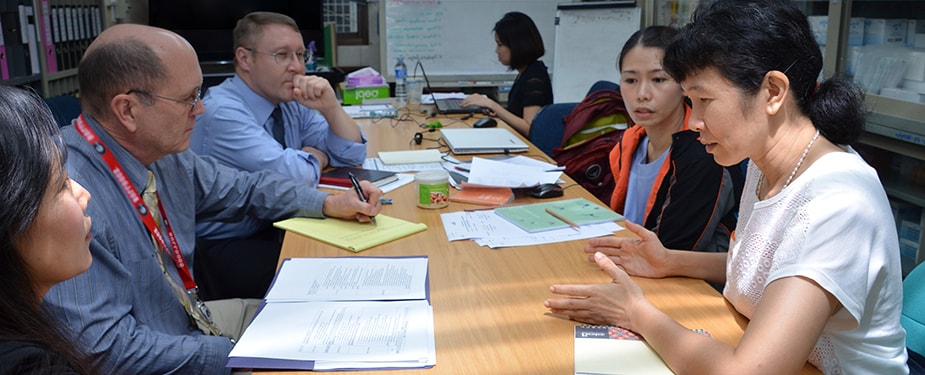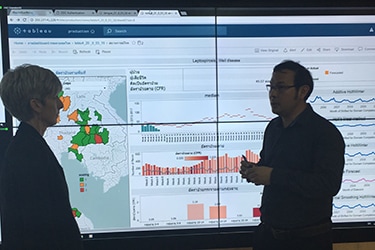Thailand Partnership Puts the Pieces Together for Emergency Response
September 6, 2018

A series of training courses and knowledge transfer were offered by visiting CDC experts.
When emergencies strike, countries need systems and people in place to quickly put all the pieces together. The expanded capabilities offered by the emergency operations center (EOC) yield faster, smarter response to any emergency.
Since the opening of Thailand’s EOC in 2016, experts within its walls have efficiently and effectively coordinated responses to two outbreaks of Zika virus – in 2017 and 2018 – and helped the country manage and maintain safety at a mass gathering of hundreds of thousands of people.
Inside the EOC, a “control room” serves as a one-stop shop to handle incoming alerts about potential and real public health threats. This centralizes the response effort and allows key government officials, particularly the Ministry of Public Health (MOPH) Permanent Secretary, to obtain information about a specific outbreak without having to call a variety of departments and cobble together answers to understand the extent of the health threat.
A LONGSTANDING PARTNERSHIP GETS RESULTS

Ministry of Public Health staff explaining some of the computer software used at the EOC in Bangkok.
Before the EOC’s opening, Thailand faced challenges in managing health threats. Though they had some critical pieces in place – like a strong workforce of disease detectives and a national rapid response team – parts were still missing. They needed a more efficient system, more modern infrastructure, more manpower, and resources to handle emergencies.
To achieve that, Thailand’s MOPH drew upon its longstanding partnership with CDC – a close collaboration that dates back to the establishment of the first Field Epidemiology Training Program (FETP) outside of North America more than 35 years ago. CDC support for Thailand’s rapid response capabilities began in 2007, when the Thai Sentinel Rapid Response Team first received funding and technical assistance. In the past decade, CDC’s Division of Global Health Protection in Thailand (DGHP Thailand) has been working with the MOPH to establish and develop the EOC.
In recent years, over 20 MOPH staff have traveled to CDC’s Atlanta headquarters to observe CDC’s EOC in action and learn how to better manage emergencies at home. This shared knowledge has resulted in Thailand having its own cadre of trained emergency management and response experts to staff its new EOC.
Since the opening of Thailand’s EOC in 2016, experts within its walls have efficiently and effectively coordinated responses to two outbreaks of Zika virus — in 2017 and 2018 — and helped the country manage and maintain safety at a mass gathering of hundreds of thousands of people.
READY AGAINST OUTBREAKS AND OTHER THREATS
Determined to increase its capacity to respond to all kinds of infectious disease threats and public health emergencies, Thailand has invested in setting up a network of local and regional EOCs modeled on the national EOC, including an EOC commissioned by the Bangkok Metropolitan Administration.
With a functioning public health emergency management system in place, public health officials can quickly and effectively coordinate an overall emergency response, immediately make policy decisions and allocate personnel, collect and analyze data, and provide timely information to the public that stops epidemics and saves lives.